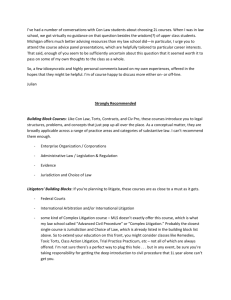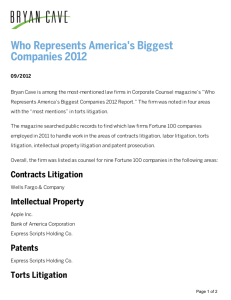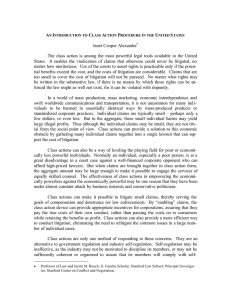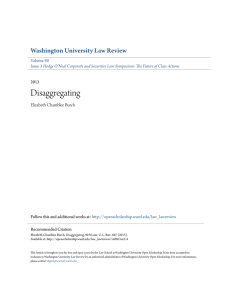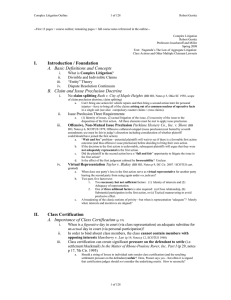21A. 219 Civil Justice System 1. Civil justice system:
advertisement
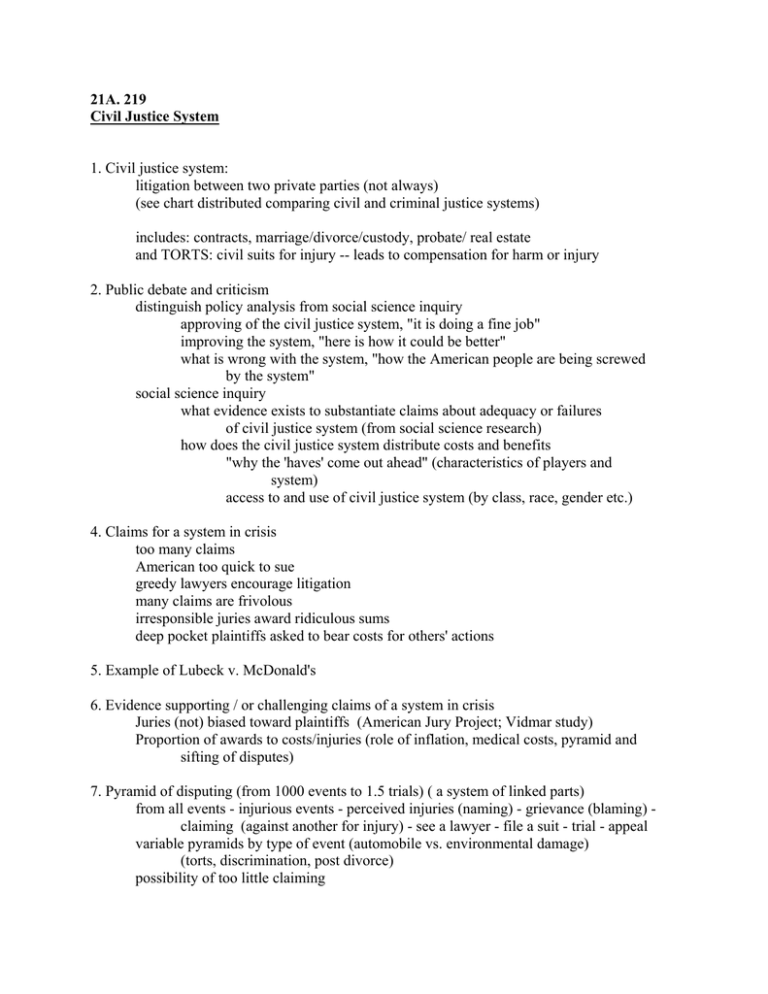
21A. 219 Civil Justice System 1. Civil justice system: litigation between two private parties (not always) (see chart distributed comparing civil and criminal justice systems) includes: contracts, marriage/divorce/custody, probate/ real estate and TORTS: civil suits for injury -- leads to compensation for harm or injury 2. Public debate and criticism distinguish policy analysis from social science inquiry approving of the civil justice system, "it is doing a fine job" improving the system, "here is how it could be better" what is wrong with the system, "how the American people are being screwed by the system" social science inquiry what evidence exists to substantiate claims about adequacy or failures of civil justice system (from social science research) how does the civil justice system distribute costs and benefits "why the 'haves' come out ahead" (characteristics of players and system) access to and use of civil justice system (by class, race, gender etc.) 4. Claims for a system in crisis too many claims American too quick to sue greedy lawyers encourage litigation many claims are frivolous irresponsible juries award ridiculous sums deep pocket plaintiffs asked to bear costs for others' actions 5. Example of Lubeck v. McDonald's 6. Evidence supporting / or challenging claims of a system in crisis Juries (not) biased toward plaintiffs (American Jury Project; Vidmar study) Proportion of awards to costs/injuries (role of inflation, medical costs, pyramid and sifting of disputes) 7. Pyramid of disputing (from 1000 events to 1.5 trials) ( a system of linked parts) from all events - injurious events - perceived injuries (naming) - grievance (blaming) claiming (against another for injury) - see a lawyer - file a suit - trial - appeal variable pyramids by type of event (automobile vs. environmental damage) (torts, discrimination, post divorce) possibility of too little claiming 8. Why the 'haves' come out ahead? one shotters vs. repeat players in a system of linked parts recurrent transactions generate routine disputes/ predict events, routinize responses economies of scale relationships with institutional incumbents fewer constraints for settlement, play the odds play for rule changes access to quality legal counsel structure of a passive legal system (action initiated by plaintiffs) 9. Access to civil justice research social class affects court use directly because poor have fewer resources social class affects court use indirectly by shaping the legal needs of the poor legal needs often defined by the needs of middle and upper class, property holders legal needs and disputing defined by economic rationality, cost benefit analysis, ignores cultural variation and meanings that lie beside if not outside economic exchange variations in research produce differential results variations in need/ by type of problem variations in disputing interpretations by cultural location 10. A study combining multiple methods ( broad demographically represented survey, in-depth ethnographic data collection) legal needs broadly defined (over 100 problems); average 14 per family no race, ethnic, socio-economic variation in # of problems reported; only variation in number by gender types of problems - noisy neighbors, consumer issues: race, socio-economic and gender variation in the types of problems legal action taken in 14% of problems no race, ethnic or social class variation in legal action confirmed low rate of civil litigation, confirmed rate of minorities in civil courts



